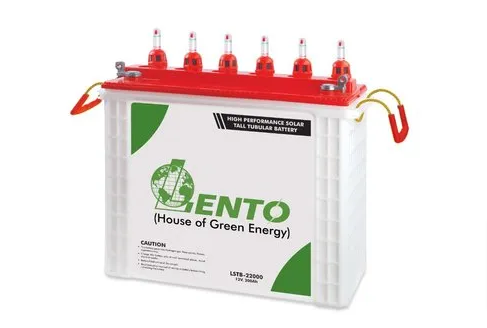Can I Drain My Lead Acid Battery and Replace It with New Acid?

Can I Drain My Lead‑Acid Battery and Replace It with New Acid?
Swapping out the acid in a lead‑acid battery is an old practice many believe restores capacity—but it often causes more harm than good. Modern batteries use precise electrolyte formulations and plate alloys, so improper acid replacement risks corrosion, imbalance, and safety issues. This guide explains why acid replacement isn’t recommended, how Lento’s low‑maintenance battery designs eliminate the need, and what best practices distributors and workshops should follow to maximize battery life and safety.
1. Why Acid Replacement Sounds Appealing—But Isn’t
The Myth
“Old acid” becomes contaminated over time; replacing it with fresh acid should restore performance.
The Reality
- Precise Electrolyte Mix: Lead‑acid batteries require a specific gravity (density) and acid concentration (typically 1.265 ± 0.005 kg/L at 25 °C). Mixing errors reduce performance and cycle life.
- Plate Wear: Sulfation and corrosion occur on the plates—new acid can’t reverse physical plate damage.
- Stratification Issues: Fresh acid sinks; without proper mixing, the top of the plates remains under‑acidified, leading to uneven aging and capacity loss.
2. Risks of Draining and Refilling Acid
|
Risk |
Consequence |
|
Incorrect Specific Gravity |
Over‑ or under‑concentrated electrolyte accelerates plate corrosion. |
|
Plate Material Damage |
Exposure to air during acid drain oxidizes plates, reducing capacity. |
|
Safety Hazards |
Handling concentrated sulfuric acid risks burns, inhalation injuries. |
|
Warranty Voidance |
Manufacturer warranties require original electrolyte and sealed systems. |
Distributors should advise workshops and end users that acid swapping voids warranty and endangers personnel.
3. Lento’s Maintenance‑Minimized Battery Designs
3.1 Sealed Maintenance‑Free (SMF/VRLA) Series
- Electrolyte Immobilized: Absorbent Glass Mat (AGM) or gel seals flood‑free operation—no acid refill ever needed.
- Corrosion‑Resistant Plates: Hybrid‑alloy reduces water and acid loss, extending service life to 10 years.
- Safety: Factory‑sealed design eliminates handling risks.
3.2 Tubular Flooded Series (TGS)
- Low‑Antimony Alloy: Minimizes water loss—distilled‑water top‑ups only, no acid changes.
- High‑Pressure Tubular Plates: Resist corrosion and stratification, delivering 1,200 cycles at 80 % DoD.
- 36‑Month Warranty: Covers manufacturing defects, provided proper water maintenance is followed.
4. Proper Battery Refurbishment vs. Acid Replacement
|
Service |
Recommended Practices |
|
Desulfation |
Use controlled high‑frequency charger or pulse desulfator to break down sulfate crystals. |
|
Equalization Charge |
Apply a controlled overcharge (2.45 V/cell for tubular flooded batteries) to rebalance cells annually. |
|
Electrolyte Top‑Up |
Add distilled water only—maintain the level 5 mm above plates for flooded tubular models. |
|
Module Replacement |
For SMF batteries, replace entire battery when end‑of‑life is reached—never open the sealed case. |
Workshops offering desulfation and equalization services add value and preserve battery health better than acid swapping.
5. Step‑by‑Step: Safe Water Top‑Up for Flooded Batteries
- Check Specific Gravity
- Use a hydrometer. Target 1.265 ± 0.005 kg/L at 25 °C.
- Charge Battery
- Bring to ~70 % SoC to warm electrolyte and improve mixing.
- Add Distilled Water
- Fill only to the manufacturer’s “max” level—never overfill.
- Equalize
- Charge at 2.45 V/cell for 4 hours in ventilated area.
- Re‑Check Gravity and Voltage
- Ensure cells are balanced (variation < 0.02 kg/L).
Distributors can supply hydrometers, distilled water kits, and training to ensure correct service.
6. Why Lento Batteries Eliminate Acid Swapping
- Factory‑Matched Electrolyte: Lento batteries leave the factory with precisely measured acid, optimized for plate chemistry.
- Sealed SMF Models: Never expose to air—no acid handling, no mixing errors, full warranty intact.
- Low‑Antimony Flooded Models: Minimized water and acid loss, requiring only water top‑ups over 6–12 months—simplifying maintenance.
Emphasize to B2B clients that choosing Lento removes acid‑refill confusion and liability.
8. Conclusion
While replacing battery acid may seem like a quick fix, it risks damaging plates, voiding warranties, and endangering safety. Distributors and workshops should instead focus on proper desulfation, water top‑ups, and full‑service offerings. Lento’s SMF/VRLA batteries remove acid‑swap concerns entirely, and its low‑maintenance tubular flooded models simplify upkeep with only distilled water top‑ups. By choosing Lento and adopting best practices, B2B partners can ensure safe, reliable battery performance—and capture higher margins through value‑added services.
Frequently Asked Questions (FAQs)
- Can sulfation be fully undone by acid replacement?
No. Sulfation hardens on the plates and requires controlled charging; fresh acid alone won’t remove it. - Does adding battery acid improve capacity?
Only correcting low acid levels helps; replacing acid risks incorrect specific gravity and plate damage. - How often should I top up a Lento tubular flooded battery?
Typically every 6–12 months, depending on temperature and usage, with distilled water only. - Can I open a sealed SMF/VRLA battery for maintenance?
No. SMF batteries are factory‑sealed—opening them voids warranty and poses safety risks. - What’s the benefit of Lento’s low‑antimony alloy in flooded batteries?
It minimizes water and acid loss, extending intervals between top‑ups and reducing maintenance costs. - Is desulfation better than acid replacement?
Yes. Controlled desulfation via pulse charging restores capacity without risking plate damage or chemical imbalance. - How do I safely dispose of old battery acid?
Neutralize with baking soda before disposal, or better—use a licensed battery recycling center. - What warranties cover Lento batteries?
SMF models carry 24 months; tubular flooded models carry 36 months—both require following Lento’s maintenance guidelines.

